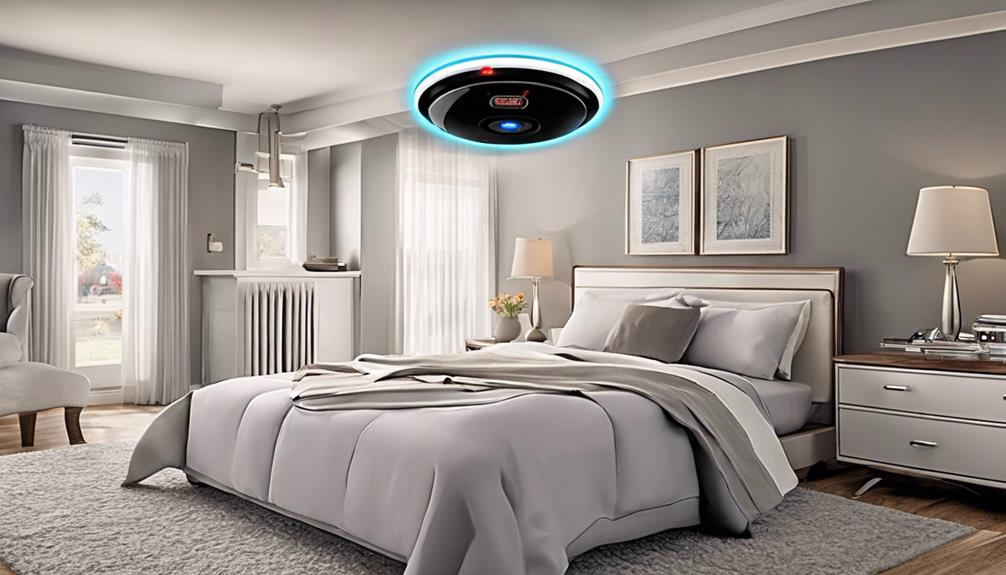In the symphony of life, the sound emits a melody that captivates us, but what do we do when the music starts to fade away?
Assistive Listening Devices (ALDs) offer a key to unlocking clearer communication for those experiencing hearing challenges.
From enhancing conversations to navigating bustling environments, ALDs provide a bridge to a world of improved auditory experiences.
Ready to explore how these devices can harmonize your hearing capabilities and enrich your interactions?
Key Takeaways
- ALDs offer tailored solutions for various hearing needs, enhancing communication clarity.
- They benefit individuals of all ages with mild to profound hearing loss.
- ALDs can be used independently or with hearing aids for improved sound quality.
- Cost-effective options and insurance coverage make ALDs accessible for diverse populations.
Understanding Assistive Listening Devices
Assistive Listening Devices (ALDs) are sophisticated personal technologies specifically engineered to enhance real-time, one-on-one communication for individuals experiencing hearing loss. These devices, such as Pocketalker and wireless FM systems, work by amplifying sound and reducing background noise, enabling better listening experiences for those with hearing difficulties. ALDs can be utilized independently, without hearing aids, or in conjunction with hearing aids or cochlear implants to improve sound clarity and reception.
Hand-held amplifiers equipped with microphones play a crucial role in bringing sound closer to the ears, aiding individuals with varying degrees of hearing loss. In environments like classrooms, theaters, and places of worship, ALDs like FM systems and sound field systems are extensively used to facilitate better communication by ensuring that individuals with hearing impairments can effectively engage in conversations and activities. By utilizing assistive listening systems, individuals with hearing loss can actively participate in various social settings and conversations, enhancing their overall quality of life.
Different Types of ALDs
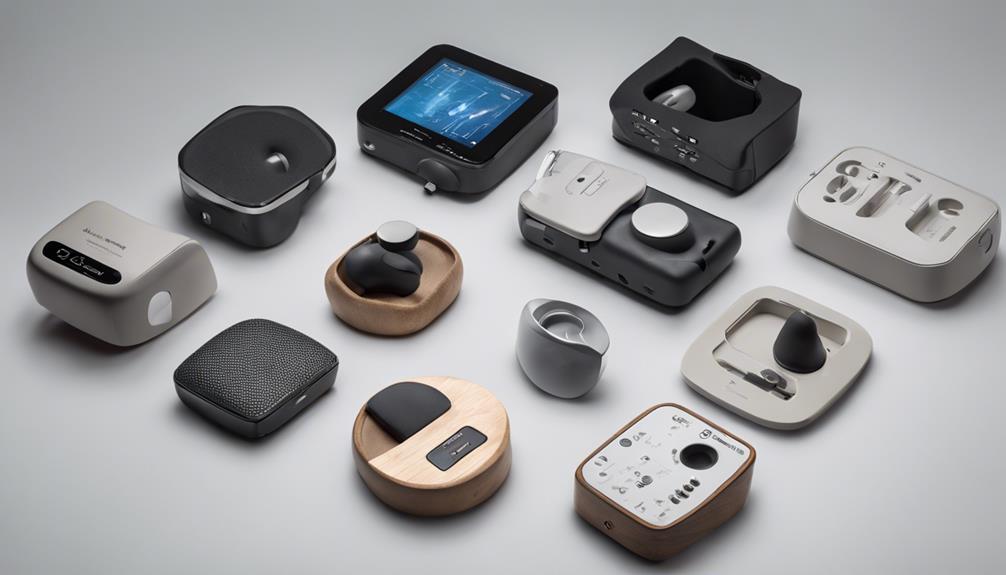
Exploring the range of assistive listening devices available reveals a diverse selection of technologies tailored to enhance sound transmission and improve communication for individuals with hearing loss. When considering different types of ALDs, several options stand out:
- Induction Loop: This system uses electromagnetic energy to transmit audio signals directly to hearing aids or cochlear implants equipped with telecoils, reducing background noise and enhancing speech clarity in public venues like theaters or churches.
- FM Systems: These devices use radio signals to broadcast sound from a microphone directly to a receiver worn by the listener, ideal for classrooms, conferences, or group settings where distance might affect hearing clarity.
- Infrared Systems: By utilizing infrared light to transmit audio signals, these ALDs offer secure, interference-free communication in environments like theaters or courtrooms where privacy and confidentiality are essential.
Each of these ALDs plays a crucial role in improving the auditory experience for individuals with hearing loss, demonstrating advancements in technology that prioritize accessibility and inclusivity.
How ALDs Benefit Hearing
ALDs significantly enhance auditory clarity by isolating speech from background noise, thereby improving communication for people with hearing loss. These devices offer a crucial benefit by enhancing speech clarity, making it easier for individuals with hearing impairments to understand conversations in various environments.
Research indicates that ALDs can provide a volume increase of 15-25 dB, which is particularly beneficial for those with differing degrees of hearing loss. By breaking down communication barriers, ALDs enable individuals with hearing loss to achieve similar understanding levels as those with normal hearing, significantly improving their quality of life. ALDs also complement the functionality of hearing aids and cochlear implants, catering to individuals with mild to profound hearing loss.
Moreover, to ensure accessibility and compliance with ADA guidelines, it's essential for public places to provide ALS receivers at no cost. ALDs offer substantial benefits in enhancing speech clarity and communication for individuals with hearing loss, ultimately promoting inclusivity and equal participation.
Who Can Benefit From ALDs

Individuals across various age groups who experience hearing difficulties, ranging from mild to profound, can benefit significantly from Assistive Listening Devices (ALDs).
These devices cater to specific hearing needs, offering tailored solutions for different levels of hearing loss. ALDs are versatile tools that can benefit a broad spectrum of users, ensuring accessibility and improved communication for those with hearing impairments.
Target ALD Users
People across a wide spectrum of hearing loss severity can benefit significantly from assistive listening devices (ALDs). ALDs are particularly useful for individuals facing challenges in communication due to background noise or varying degrees of hearing impairment. Specific target users include:
- Individuals with mild to profound hearing loss who seek improved listening experiences.
- People with total hearing loss who can utilize ALDs with visual or vibration alerts for effective communication.
- Employers and businesses aiming to comply with the Americans with Disabilities Act (ADA) to ensure accessibility for employees and customers.
ALDs play a crucial role in enhancing interpersonal relationships and facilitating participation in daily activities for those with different levels of hearing impairment.
Specific Hearing Needs
Transitioning from the discussion on target ALD users, it's crucial to identify specific hearing needs that can be addressed effectively through the utilization of assistive listening devices (ALDs).
Individuals with mild to profound hearing loss can greatly benefit from ALDs, especially when used alongside hearing aids. For those with profound or total hearing loss, ALDs offer solutions through visual or vibrotactile communication methods.
ALDs also play a vital role in breaking down communication barriers, allowing for effective interaction. Moreover, ALDs are instrumental in ensuring compliance with the Americans with Disabilities Act (ADA) by providing necessary accommodations for individuals with varying degrees of hearing loss.
These devices cater to a wide range of specific hearing needs, enhancing overall auditory experiences.
Diverse Age Ranges
Across diverse age groups, the utilization of assistive listening devices (ALDs) has demonstrated significant benefits in addressing varying hearing needs and improving auditory experiences. ALDs cater to individuals of all ages, offering tailored solutions for their specific requirements.
- Children benefit from ALDs to enhance academic performance and social interactions in educational settings.
- Working adults utilize ALDs in professional environments to improve communication effectiveness and productivity.
- Seniors experiencing age-related hearing loss rely on ALDs for better engagement in social activities and daily conversations.
ALDs play a crucial role in providing necessary auditory input across all stages of life, ensuring that individuals with hearing impairments can fully participate in various aspects of life.
Cost Considerations for ALDs

When considering the cost of Assistive Listening Devices (ALDs), it's essential to understand that the price range varies significantly depending on the device's features and capabilities. ALDs can range from as low as $50 for basic personal amplifiers to over $500 for advanced wireless systems with Bluetooth connectivity and noise-canceling features.
Insurance coverage for ALDs varies, with some devices being eligible for reimbursement through private insurance or Medicare. Financial assistance programs such as Vocational Rehabilitation and the Assistive Technology Act may provide support to offset ALD expenses. Additionally, some states offer funding or grants specifically for ALDs to assist individuals with disabilities in acquiring these devices.
The cost of ALDs can be influenced by the complexity of the system and the additional functionalities it offers. Therefore, when considering purchasing an ALD, it's crucial to explore insurance coverage options, potential financial assistance programs, and grants that may help alleviate the financial burden associated with these devices.
Coverage Options for ALDs

Insurance coverage for ALDs can vary significantly. Some devices are eligible for reimbursement under specific plans. Federal programs such as Medicaid may cover certain ALDs for individuals with hearing loss. Private insurance companies might offer partial or full coverage based on the policy in place. Exploring financial assistance programs can help offset costs for ALDs if insurance coverage is limited.
Insurance for ALDs
Covering a range of assistive listening devices (ALDs), insurance options vary depending on the provider and specific policies in place. When considering insurance coverage for ALDs, individuals may encounter different options such as:
- Private insurance plans that may cover specific ALDs.
- Medicare, which may provide coverage for certain assistive listening devices.
- Medicaid, offering coverage for ALDs based on individual state policies.
It is essential to review the terms of each insurance plan carefully to determine the extent of coverage for ALDs. Additionally, under the Affordable Care Act (ACA), some ALDs may be considered essential health benefits, further expanding coverage options. Veterans can explore assistance through the Department of Veterans Affairs (VA) healthcare benefits, while federal programs like the Assistive Technology Act may offer financial aid for acquiring ALDs.
Medicare ALD Coverage
Exploring coverage options for assistive listening devices (ALDs) under Medicare reveals that the program typically doesn't cover the cost of devices like hearing aids or cochlear implants. However, coverage for ALDs under Medicare may be accessible through supplemental insurance plans or Medicaid in specific instances. Certain Medicare Advantage plans may also provide coverage for ALDs as an additional benefit.
Individuals with Medicare seeking coverage for ALDs could explore alternative funding sources or assistance programs. To understand the available options, it's crucial to check with Medicare or insurance providers regarding specific coverage for ALDs. This process ensures that individuals can make informed decisions about obtaining necessary assistive listening devices to enhance their hearing capabilities.
Working Mechanisms of ALDs
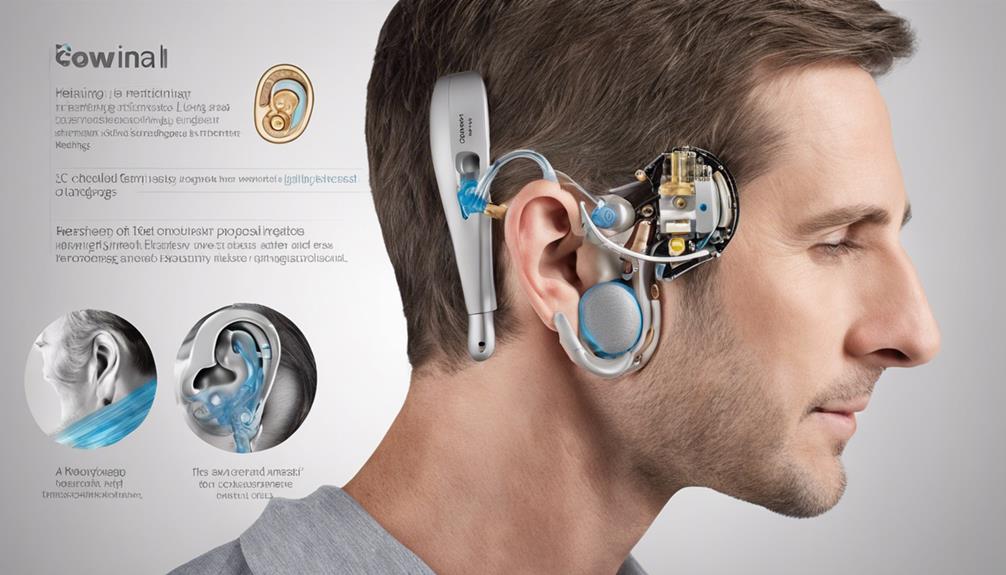
Utilizing advanced technologies such as FM systems and induction loops, assistive listening devices (ALDs) amplify sound directly into the ear to enhance the speech-to-noise ratio for individuals with hearing loss. ALDs employ sophisticated mechanisms to improve the clarity of sound and facilitate better communication experiences for users.
- ALDs separate speech from background noise, reducing auditory distractions and focusing on the desired sound.
- By enhancing the speech-to-noise ratio, ALDs make it easier for individuals with hearing loss to understand conversations in noisy environments.
- These devices work by prioritizing the clarity of conversations, ensuring that users can engage effectively in various listening situations.
ALDs effectively combat the challenges posed by background noise, allowing users to actively participate in discussions, meetings, and social interactions with improved hearing capabilities. The intricate working mechanisms of ALDs aim to provide tailored solutions that optimize the listening experiences of individuals with hearing impairments.
Tips for Choosing ALDs
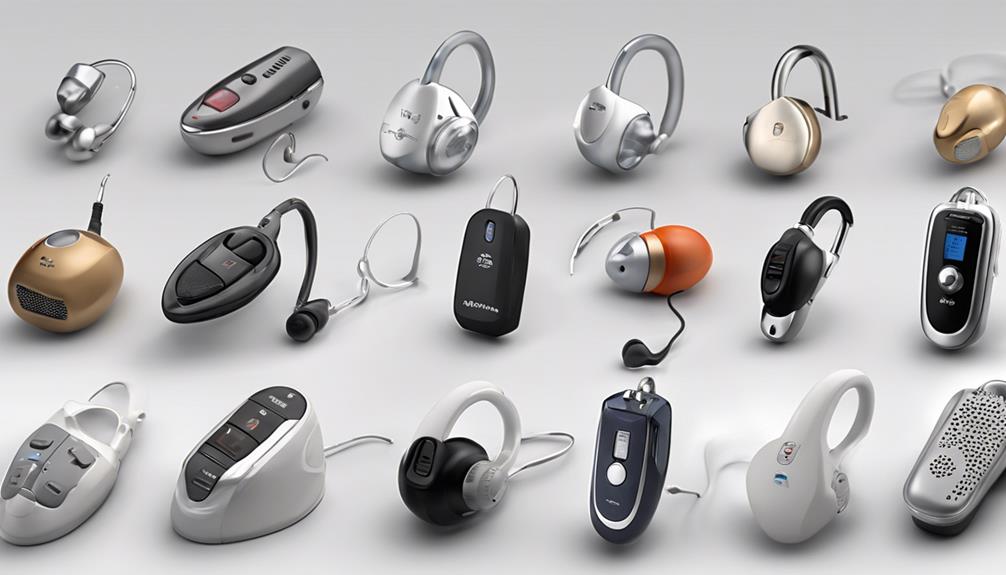
To select the most appropriate assistive listening device (ALD) for an individual with mild hearing loss, it's crucial to consider their specific hearing requirements and preferences. When choosing an ALD, evaluating the environment where it will be used is essential. For noisy environments, look for features like background noise reduction to enhance speech clarity. Additionally, consider ALDs with volume control options for personalized amplification levels based on individual preferences.
Compatibility with existing hearing aids or cochlear implants is paramount for seamless integration. Ensuring that the ALD can work effectively with current hearing devices will optimize the overall hearing experience. Seeking guidance from audiologists or hearing specialists is advisable as they can provide personalized recommendations based on the individual's specific needs and lifestyle.
Maintaining and Caring for ALDs
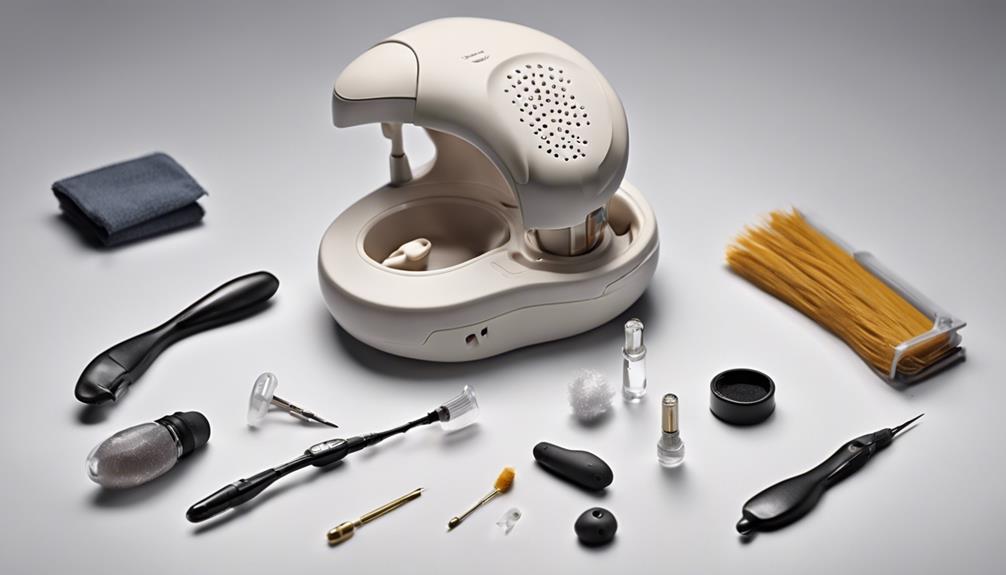
Regular maintenance of assistive listening devices (ALDs), such as checking the t-coil functions in hearing aids, is crucial to ensure optimal performance. Taking care of ALDs not only prolongs their lifespan but also guarantees that users receive the intended benefits.
Here are some essential maintenance practices for ALDs:
- Regularly inspect t-coil functions: Check the t-coil settings in your hearing aid to ensure they're functioning correctly. This step is vital for seamless connectivity to hearing loops and other assistive listening systems.
- Keep hearing loops well-maintained: Properly installed hearing loops typically require minimal upkeep, making them convenient for users. Regularly checking for any issues with the loop system can prevent disruptions in sound transmission.
- Ensure telecoil technology functionality: Telecoil technology in hearing aids is essential for accessing assistive listening systems. Regularly testing and maintaining this feature is crucial for individuals with hearing loss to benefit from ALDs effectively.
Frequently Asked Questions
What Devices Are Used to Enhance Hearing?
To enhance hearing, various devices are employed, catering to individual needs. FM systems and sound field systems, common in educational settings, help those with hearing loss. T-coils and loop systems transmit signals directly into hearing devices in looped areas.
Alerting devices offer visual or vibrotactile indicators for daily and emergency situations. Bluetooth technology allows wireless connectivity to smartphones for enhanced hearing aid functionality. These tailored solutions provide effective listening support for varying degrees of hearing loss.
What Are the Benefits of Assistive Listening Devices?
The benefits of assistive listening devices are numerous. They enhance communication in challenging environments by boosting specific sounds, aiding individuals in adverse listening conditions.
ALDs cater to varied hearing needs based on the severity of impairment. These devices are crucial for businesses to comply with the ADA and provide accessibility.
ALDs break down barriers and improve reception of telecommunication and media signals, improving overall quality of life for individuals with hearing loss.
How Does the Device Help With Improving Hearing?
Improving hearing involves amplifying sound directly into the ear, separating speech from background noise, and enhancing the speech-to-noise ratio.
These elements are crucial for individuals with mild to profound hearing loss, as they effectively increase volume levels and extend the functionality of hearing aids and cochlear implants.
Research shows that these devices can help achieve similar understanding levels to those with normal hearing, highlighting their significant impact on improving auditory experiences.
What Are the Listening Devices for Apd?
Listening devices for Auditory Processing Disorder (APD) include FM systems, sound field systems, and T-coils with loop systems.
FM systems enhance speech clarity in challenging environments, sound field systems amplify teacher's voice in classrooms, and T-coils with loop systems transmit signals directly to hearing devices for improved auditory processing.
These devices aid individuals with APD in overcoming communication barriers and optimizing their listening experience.
Conclusion
In conclusion, Assistive Listening Devices (ALDs) serve as a lifeline for individuals with hearing loss, amplifying sounds like a beacon in a sea of noise. These devices not only enhance communication but also improve overall quality of life by allowing for greater engagement in social interactions.
Choosing the right ALD and maintaining it properly can make a significant difference in how effectively individuals with hearing loss can navigate the world around them.


